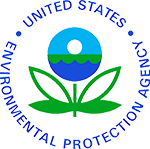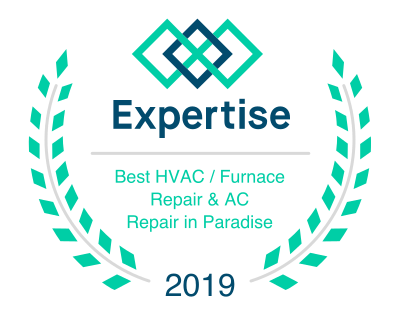Are you experiencing itchy eyes, sneezing, or a sore throat while at home? Does your house sometimes smell musty or mildewy? Then you may have an issue with indoor air quality on your hands. Luckily, there are some easy ways to improve your home’s air quality without having to hire a professional service or invest in pricey whole-house air purifiers.
At The Cooling Company, we have been in the business of helping Las Vegas residents breathe easier at home for more than 50 years.
Our technicians are seasoned experts at purifying indoor. So we can improve your air quality. And we can reduce your allergies and asthma symptoms. Here are some of their top suggestions for purifying the air you breathe and experiencing greater comfort indoors.
Signs of Poor Indoor Air Quality
Indoor air quality plays a major role in your health and wellness. You shouldn’t routinely breathe in allergens, dander, chemicals, or mold spores. This can cause certain side effects and symptoms.
Here are some common symptoms of poor indoor air quality:
- Runny nose or sneezing
- Coughing
- Itchy, watery eyes
- Sinus congestion
- Fatigue
- Headaches
1. Change Air Filters
Inside your heating and cooling system is a disposable barrier called an air filter. The filter catches and traps debris as it travels through your ductwork. That includes things like dust, dander, pet hair, and pollen spores. After a few months, the filter will become clogged with debris and need to be swapped for a fresh filter.
Heating and cooling technicians recommend changing the air filter every three to six months, or roughly once per season. However, if you have lots of pets or live in a high-pollen area, you may want to change your air filter more often.
2. Keep Plants Outside
Plants may look beautiful. But they’re dangerous for people who suffer from allergies and asthma. Plants can cause respiratory distress because of the pollen.
Almost all plants release pollen and allergens. It’s simply part their natural life cycles. And some release much more than others.
The only way to prevent plant-based allergens from reducing your home’s indoor air quality is by keeping the plants outside. You also have the option of swapping out your live indoor plants for silk plants, which don’t give off allergens.
3. Vacuum Regularly
Carpets, rugs, and even upholstery can trap a multitude of allergy-inducing dust particles. Eventually, these particles will become airborne and make their way into your lungs where they can cause runny nose, itchy eyes, and coughing.
The most effective way to rid your home’s air of these pesky particles is by vacuuming regularly. Vacuums with built-in, reusable filters are especially effective at catching small debris particles. And this makes them ideal for pet owners.
4. Open Windows Periodically
We often think of the air outdoors as being more polluted than the air in our homes. But the truth is that indoor air can contain just many, if not more, pollutants. Opening your windows once a week for just a couple of minutes at a time can improve air circulation throughout your home. Not only that, but open windows can help remove trapped pollutants, mold spores, and unpleasant odors from your home.
5. Run the Microwave Fan
A hot meal may smell delicious. But the process of cooking it can release tons of pesky molecules into the air. Think from cooking oil to pungent spices and lingering odors. The act of cooking fills the air as much as it fills your belly.
Luckily, many kitchens have a handy, built-in solution for dealing with this problem: microwave fans. Simply turn on the fan while you’re frying up your next skillet of fish or eggs. And the aerosolized molecules will be whisked safely out of your kitchen.
6. Reduce Humidity
High humidity levels in the home create the perfect breeding ground for mold and mildew. And both of these are very harmful.
Switch on the bathroom fan after you or a family member takes a shower. This helps to safely vent excess humidity. And if your dishwasher produces a lot of steam during operation, open a nearby window. Or you can switch on the microwave fan to route it outside.
Then, if those changes aren’t quite enough, you can invest in a portable dehumidifier to handle the excess. You can find high-quality, affordable dehumidifiers at most hardware stores and e-commerce shops specializing in home goods. They come in different sizes and capacities. So be sure to select one powerful enough for the size of your home.
7. Use Organic Cleaning Products
Household cleaning chemicals are a major source of indoor air toxins. From window cleaners to furniture polishes and caustic bathroom cleaners, they help pollute your indoor air. These chemicals are introduced into your home’s air supply every time you do chores.
Luckily, there are now many safe and organic cleaning products to choose from. There are brands nowadays that produce safe cleaning products. So you don’t have to expose yourself to harsh chemicals. Instead they favor natural ingredients that are safe to breathe.
Some homeowners are even opting to go fully organic. So they just use pantry staples like lemon and vinegar for cleaning purposes.
8. Upgrade Your Furniture and Decor
It’s an unfortunate reality that many common furniture items are manufactured with toxic compounds like flame retardants, laminates, polishes, glues, and glosses. These toxic molecules will eventually make their way into the air you breathe.
Side effects include nose and throat irritation, headaches, and nausea. Exposure to furniture-based chemicals is dangerous. This can negatively impact your health over time. And it has been linked to kidney disease, central nervous system damage, and even cancer.
You can cut down on these chemicals by carefully researching furniture items prior to purchasing them. Take the time to ensure that they don’t contain harmful chemicals. So as a general rule, it’s best to avoid furniture built from particle board or treated with flame retardants or anti-fungal sprays.
9. Apply a Fresh Coat of Paint
Many paints contain toxins like formaldehyde, benzene, ammonium compounds, and more. Unfortunately, these unhealthy additives can offgas into your home. And this then leads to problems that range from asthma to nausea.
But you can eliminate these harsh chemicals by freshening up your walls. But be sure to use an organic, eco-friendly brand of paint.
10. Clean Sheets and Pillowcases
Bed linens like sheets, blankets, and pillowcases will trap dust mites and allergens with use. So by washing your bed linens every two weeks, you greatly eliminate the number of dust mites you come into contact with. This is especially beneficial to household residents who suffer from severe dust mite allergies. This is something that can cause chronic distress to the eyes, nose, and throat.
Las Vegas’s Air Quality Experts
In addition to the tips we shared above, your heating and cooling system also plays a significant role in your home’s indoor air quality. Get one of The Cooling Company’s annual maintenance plans. And you can ensure that your system is clean and free from dust and allergens.
Enjoy our annual heating and cooling tune-up service. Plus, we can also drastically improve your air. Think about it for a second. A whole-house air purification system and ductwork replacement.
To breathe safely and comfortably at home, trust your friendly Las Vegas air quality team at The Cooling Company. Give us a call today to learn about the best solutions for your home!












